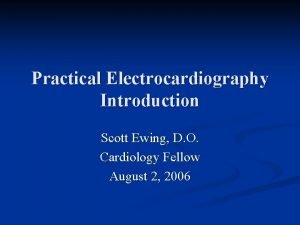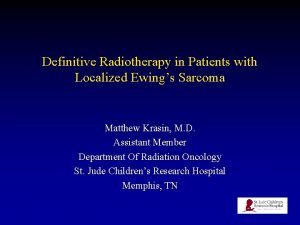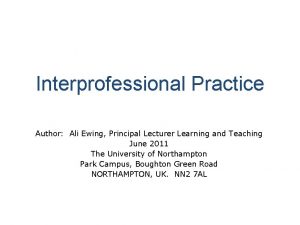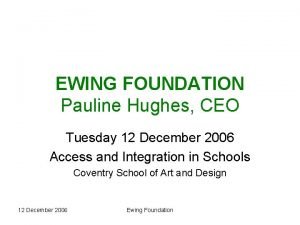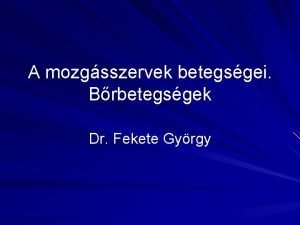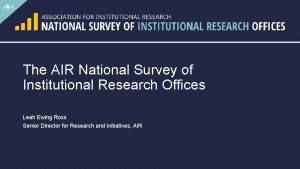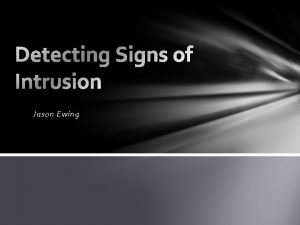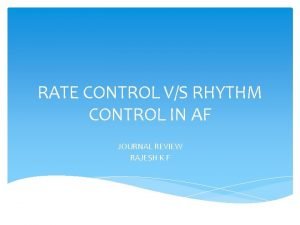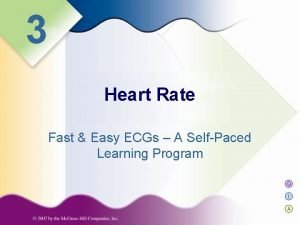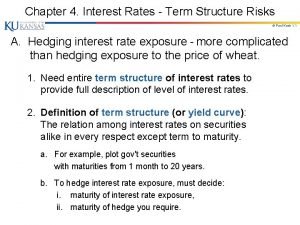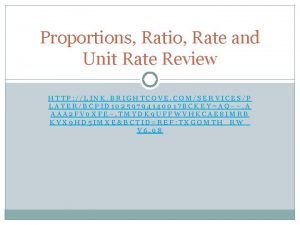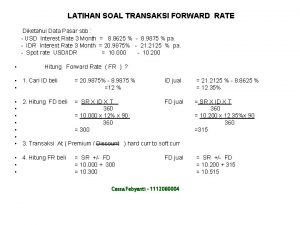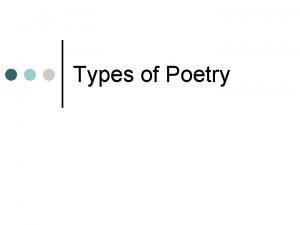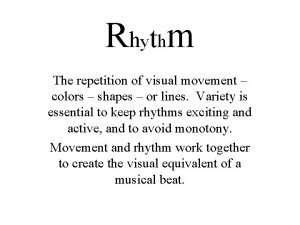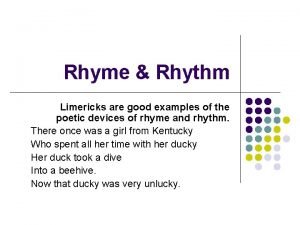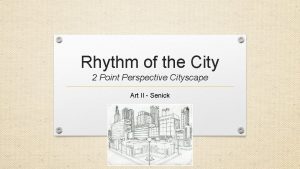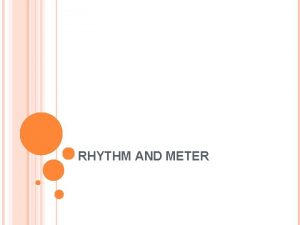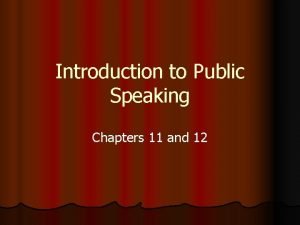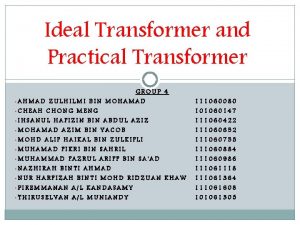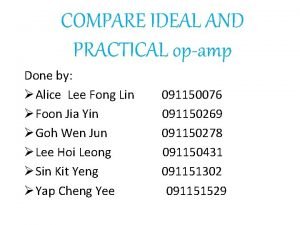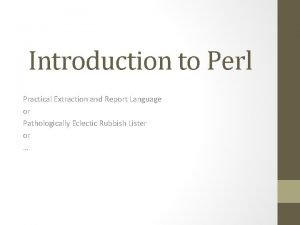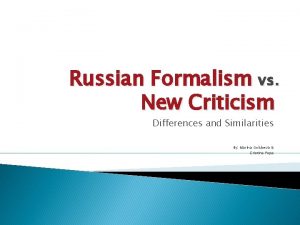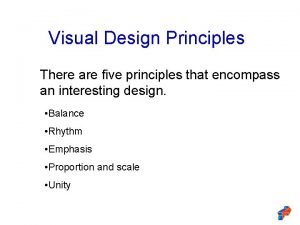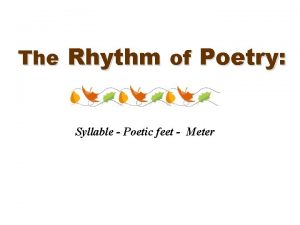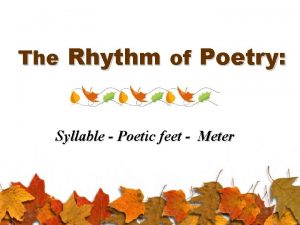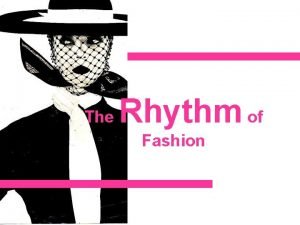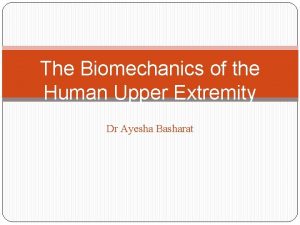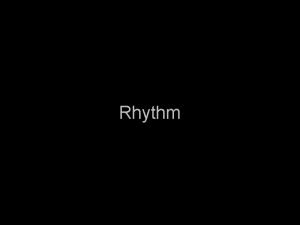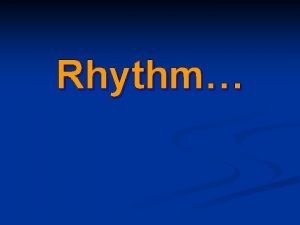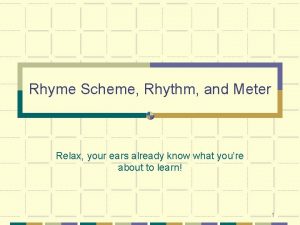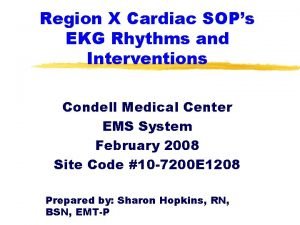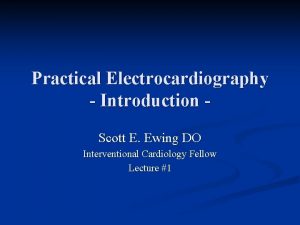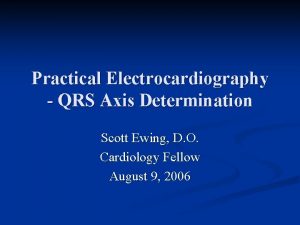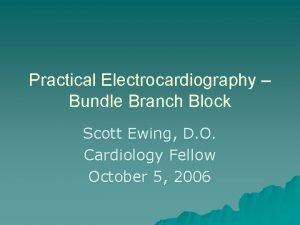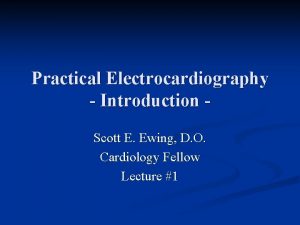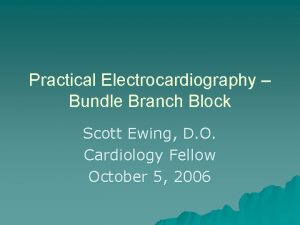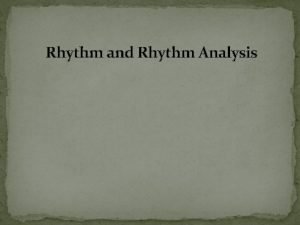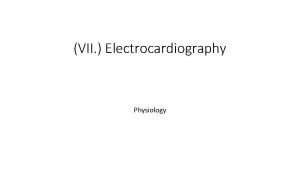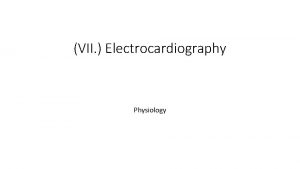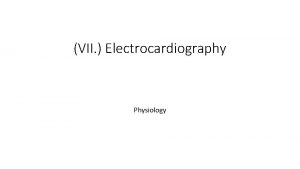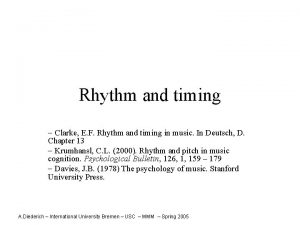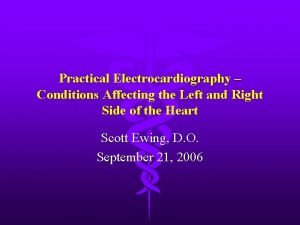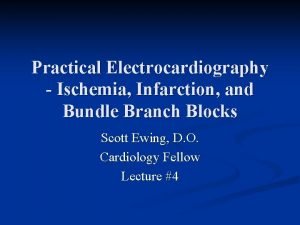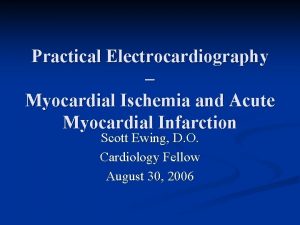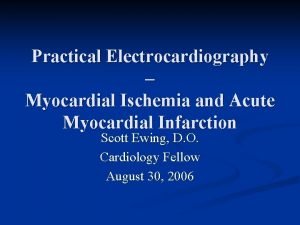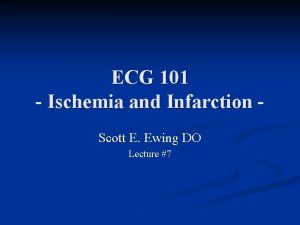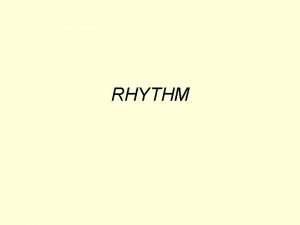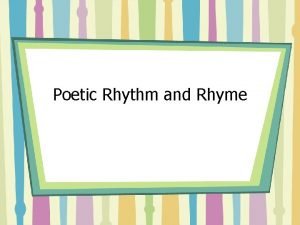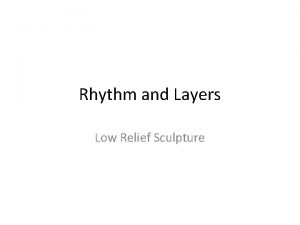Practical Electrocardiography Rate and Rhythm Scott Ewing D



















































- Slides: 51

Practical Electrocardiography - Rate and Rhythm Scott Ewing, D. O. Cardiology Fellow August 16, 2006

Syllabus n n n n Introduction Axis Determination Atrial Arrhythmias, Bradycardias, and AV Conduction Block Junctional and Broad Complex Tachycardias Myocardial Ischemia and Acute Myocardial Infarction Conditions Affecting the Left Side of the Heart Conditions Affecting the Right Side of the Heart Conditions Not Primarily Affecting the Heart

Waveform Review

Axis Review

Axis Review

Axis Review

Axis Review

Axis Review

Rate Determination


Rate

Rate?

Rate?

Rate?

Rate?

Rate?

Normal Sinus Rhythm

Normal Sinus Rhythm

Sinus Bradycardia

Sinus Bradycardia n Pathophysiology n n n Increased vagal tone in athletes Inferior wall myocardial infarction Digitalis glycosides, beta-blockers, calcium channel-blocking agents, class I antiarrhythmic agents, amiodarone Other drugs, toxins, environmental exposure (lithium, paclitaxel, toluene, dimethyl sulfoxide, topical ophthalmic acetylcholine, fentanyl, alfentanil, sufentanil, reserpine, clonidine) Electrolyte disorders Infection (diphtheria, rheumatic fever, viral myocarditis) Sleep apnea Hypoglycemia Hypothyroidism Hypothermia Increased intracranial pressure.

Sinus Bradycardia

Sinus Tachycardia

Sinus Tachycardia n Pathophysiology n n n n n Hypoxia Hypovolemia / Sepsis Pain Fever Anxiety Hyperthyroidism PE Exercise Drugs (nicotine, caffeine, atropine, salbutamol, cocaine, amphetamines, methamphetamines, ecstasy)

Sinus Tachycardia

1 st Degree AV Block

1 st Degree AV Block n Pathophysiology n n PR interval represents time needed for electrical impulse from sinoatrial node to conduct through the atria, AV node, bundle of His, bundle branches, and Purkinje fibers PR interval prolongation due to conduction delay within the right atrium, the AV node, or the His-Purkinje system AV nodal dysfunction accounts for the majority of cases First-degree AV block caused by conduction delay in the His-Purkinje system often is associated with bundle-branch block

1 st Degree AV Block

2 nd Degree Mobitz Type I AV Block Wenckebach phenomenon

Karel Frederik Wenckebach n n n n Attended the University of Utrecht, Netherlands and received his doctorate in 1888 Spent his assistant period at the institutes of zoology, and for pathological and normal anatomy in Utrecht 1901 was appointed professor of internal medicine at Groningen, Netherlands Held the same tenure at Strasbourg , France 1911 -1914 Followed a call to Vienna, Austria, where he retired from his chair in 1929 Early work concerned embryology, later concentrated his efforts in the study of the pathology and clinics of heart and circulatory diseases Apart from his well known phenomenon, he wrote one of the first descriptions of the beneficial effects of the quinine alkaloids on arrhythmias and that its successful use was mainly in patients with auricular fibrillation or recent onset (1903 -1904) Wrote an important monograph on beri in 1934

2 nd Degree Mobitz Type I AV Block n Pathophysiology n n n Conduction disturbance in the AV node Rarely secondary to AV nodal structural abnormalities when the QRS complex is narrow in width and no underlying cardiac disease is present May be vagally mediated (well-trained athletes, digoxin excess, neurally mediated syncopal syndromes) Vagally mediated AV block improves with exercise and may occur more commonly during sleep when parasympathetic tone dominates Cardioactive drugs (digoxin, beta-blockers, calcium channel blockers, and certain antiarrhythmic drugs) Various inflammatory, infiltrative, metabolic, endocrine, and collagen vascular disorders

2 nd Degree Mobitz Type I AV Block

2 nd Degree Mobitz Type I AV Block

2 nd Degree Mobitz Type II AV Block n n Intermittent failure of conduction of P waves PR interval is constant (may be normal or prolonged) May include wide QRS May progress to complete third degree AV block

2 nd Degree Mobitz Type II AV Block

Woldemar Mobitz n n n Studied in Freiburg im Breisgau and in Munich, where he obtained his doctorate in 1914 Hospital service and assistant years in the surgical clinics in Berlin and Halle, as well as the medical clinics in Munich and Freiburg 1924 he was habilitated for internal medicine in Munich, and in 1928 he became professor extraordinary at Freiburg im Breisgau Became head physician at the university medical clinic, then director of the medical clinic of the city hospital in Magdeburg Remained in Magdeburg until it was occupied by the Russian army in 1945 His main work concerns heart and circulation

3 rd Degree Heart Block

3 rd Degree Heart Block n Pathophysiology n n n Class Ia antiarrhythmics (eg, quinidine, procainamide, disopyramide) Class Ic antiarrhythmics (eg, flecainide, encainide, propafenone) Class II antiarrhythmics (beta-blockers) Class III antiarrhythmics (eg, amiodarone, sotalol, dofetilide, ibutilide) Class IV antiarrhythmics (calcium channel blockers) Digoxin or other cardiac glycosides Infection Profound hypervagotonicity Anterior wall MI Cardiomyopathy, eg, Lyme carditis and acute rheumatic fever Metabolic disturbances, eg, severe hyperkalemia

3 rd Degree Heart Block

3 rd Degree Heart Block

Atrial Fibrillation

Atrial Fibrillation n Pathophysiology n n n n Long-standing hypertension Valvular heart disease (rheumatic) Left ventricular hypertrophy Coronary artery disease Diabetes mellitus AMI CHF Pulmonary embolism Cardiomyopathy Pericarditis Hyperthyroidism Ethanol use (holiday heart) Cardiothoracic surgery (postoperative) Use of illegal drugs, such as cocaine or amphetamine derivatives Over-the-counter herbs (eg, ephedra, ginseng) Idiopathic or “Lone” AF

Atrial Fibrillation

Atrial Fibrillation

Atrial Fibrillation

Atrial Fibrillation

Atrial fibrillation with Wolff-Parkinson-White Syndrome

Atrial Flutter

Atrial Flutter n Pathophysiology n n n Long-standing hypertension Valvular heart disease (rheumatic) Left ventricular hypertrophy Coronary artery disease with or without depressed left ventricular function CHF Pericarditis Pulmonary embolism Hyperthyroidism Diabetes Mellitus Postoperative revascularization Digitalis toxicity

Atrial Flutter

Atrial Flutter

Atrial Flutter
 Scott ewing md
Scott ewing md Lciess
Lciess Ali ewing
Ali ewing Ewing foundation
Ewing foundation Gottron papula
Gottron papula The ewing public schools
The ewing public schools Leah ewing ross
Leah ewing ross Jason ewing
Jason ewing Rate and rhythm control drugs
Rate and rhythm control drugs Rate and rhythm control drugs
Rate and rhythm control drugs How to calculate heart rate from ecg with irregular rhythm
How to calculate heart rate from ecg with irregular rhythm What is real interest rate and nominal interest rate
What is real interest rate and nominal interest rate Growth analysis definition
Growth analysis definition Forward rate notation
Forward rate notation Spot rate and forward rate
Spot rate and forward rate Unit rate proportions
Unit rate proportions Cap rate interest rate relationship
Cap rate interest rate relationship Contoh transaksi forward
Contoh transaksi forward Determination of exchange rate
Determination of exchange rate Stanza structure
Stanza structure Progressive rhythm in architecture
Progressive rhythm in architecture Rhythm and rhyme
Rhythm and rhyme Difference between beat and rythm
Difference between beat and rythm Rhythm and balance in art
Rhythm and balance in art One point cityscape
One point cityscape Rhyme scheme meter
Rhyme scheme meter Beyoncé rhythm and blues
Beyoncé rhythm and blues The accepted standard of sound and rhythm is
The accepted standard of sound and rhythm is Practical extraction and reporting language
Practical extraction and reporting language Ideal and practical transformer
Ideal and practical transformer Natural science and technology grade 4 practical tasks
Natural science and technology grade 4 practical tasks Strategic gender needs and practical gender needs
Strategic gender needs and practical gender needs Compare ideal and practical characteristics of op-amp
Compare ideal and practical characteristics of op-amp Practical research 2 nature of inquiry and research
Practical research 2 nature of inquiry and research Practical extraction and reporting language
Practical extraction and reporting language Transformner
Transformner Language russian
Language russian Practical extraction and reporting language
Practical extraction and reporting language Gorry and scott morton grid
Gorry and scott morton grid Anapestic meter
Anapestic meter It has an immediate and profound effect on design.
It has an immediate and profound effect on design. Examples of feet in poetry
Examples of feet in poetry A foot in poetry
A foot in poetry What is rhythm in clothing
What is rhythm in clothing Is the pleasing and congruent arrangement of parts
Is the pleasing and congruent arrangement of parts Progressive rhythm in art
Progressive rhythm in art Halstead ligament
Halstead ligament Similar
Similar Kind of rhythm
Kind of rhythm 5 types of rhythm in interior design
5 types of rhythm in interior design Rhyme scheme
Rhyme scheme Amiodarone drip rate chart
Amiodarone drip rate chart
